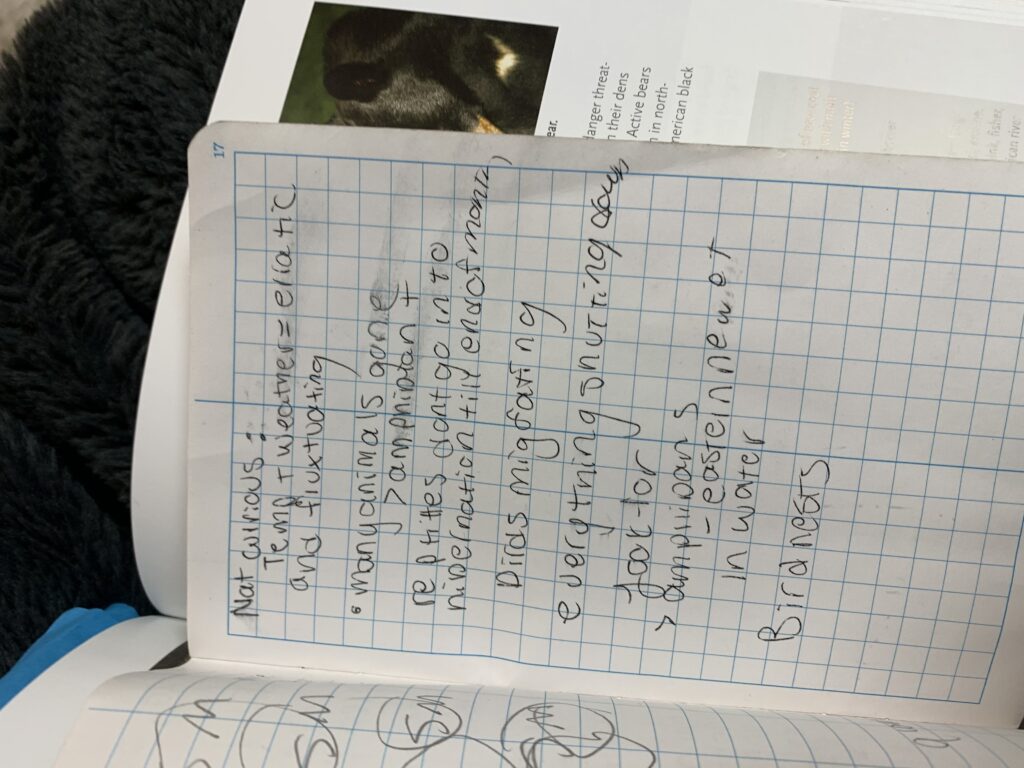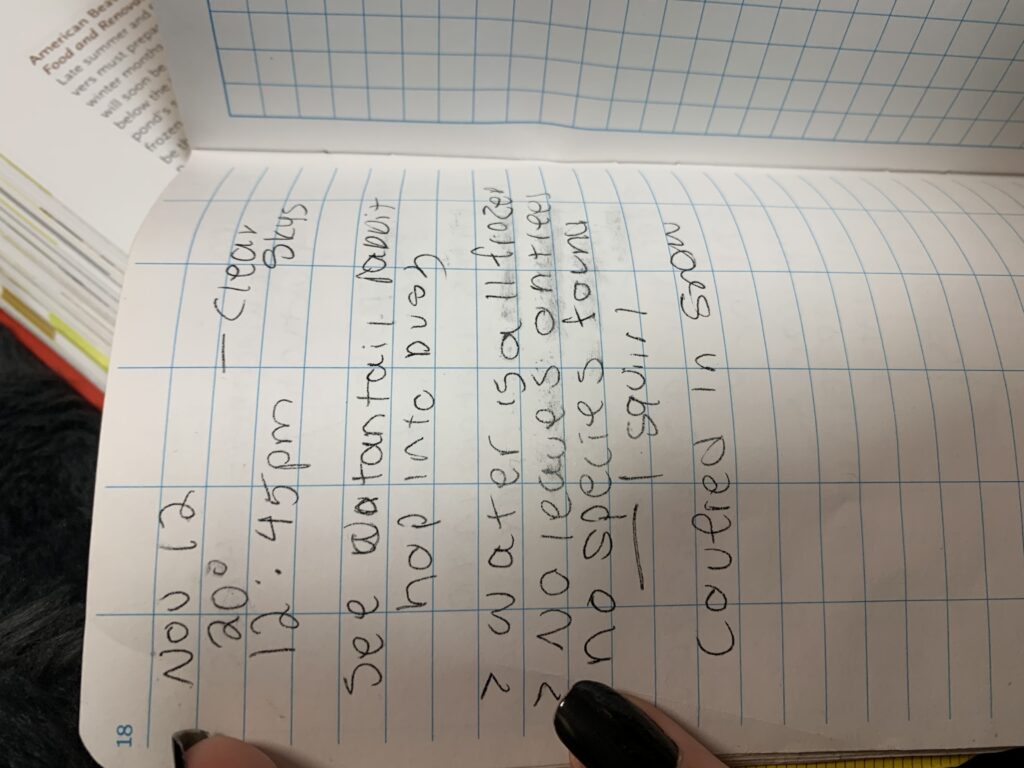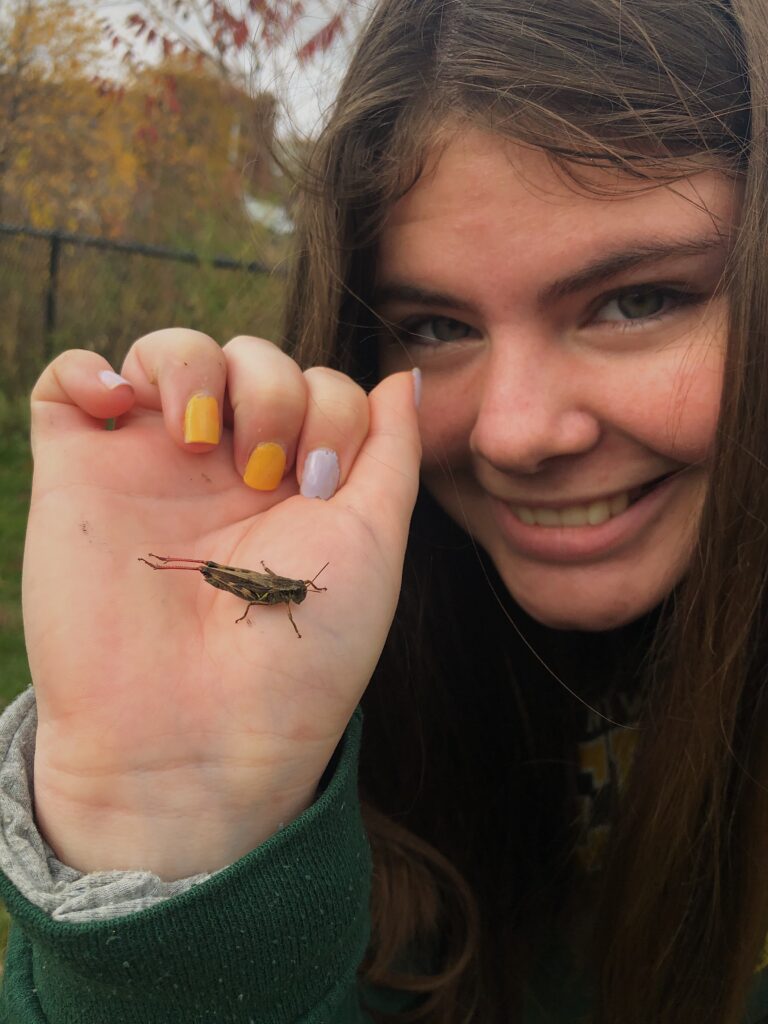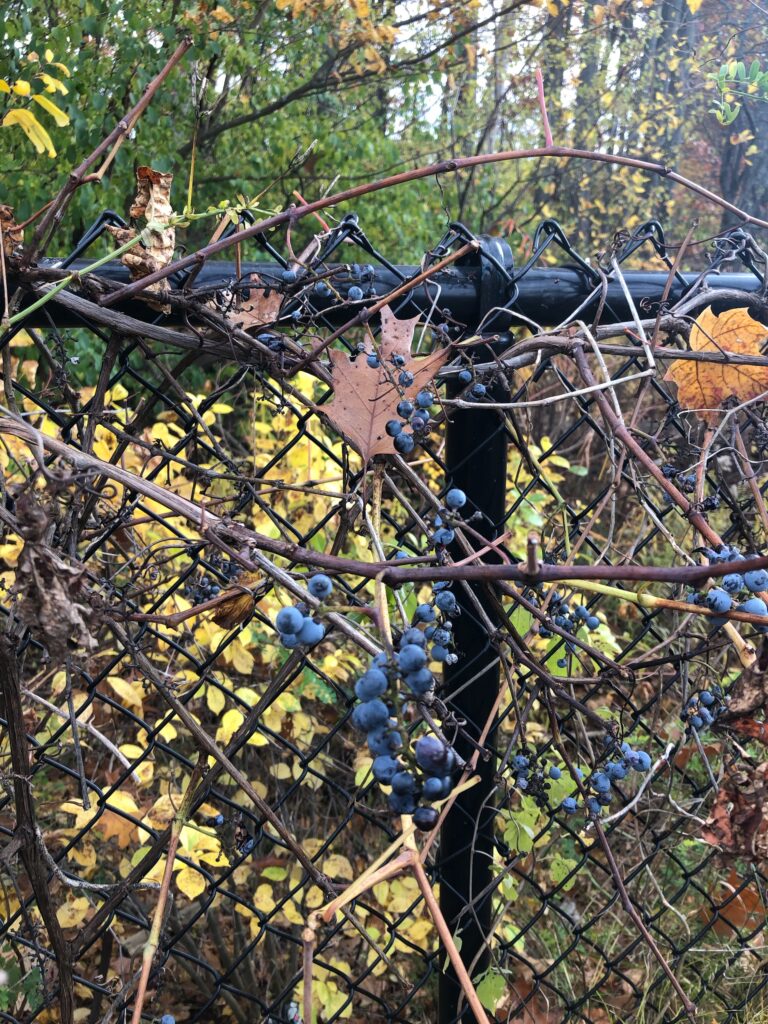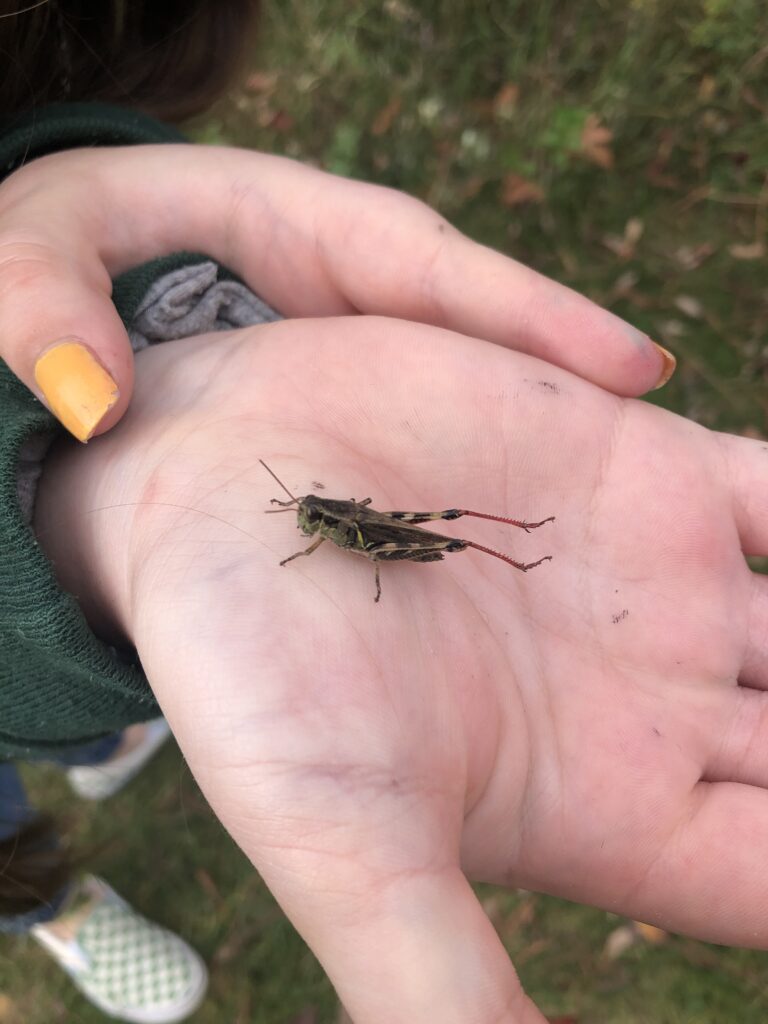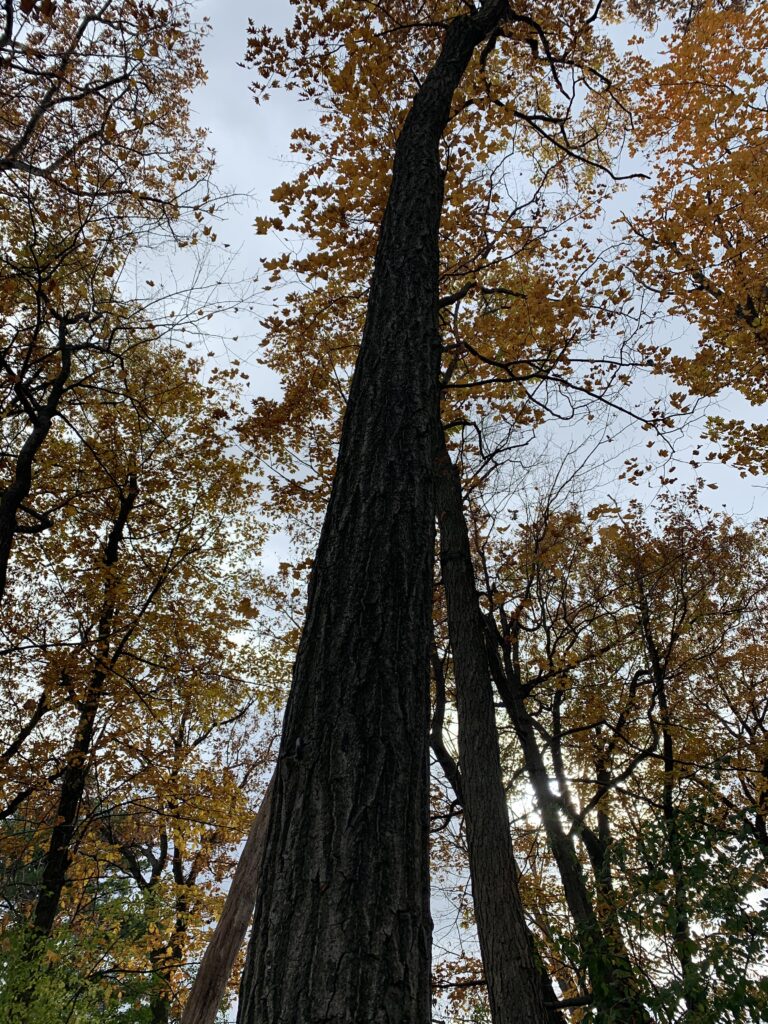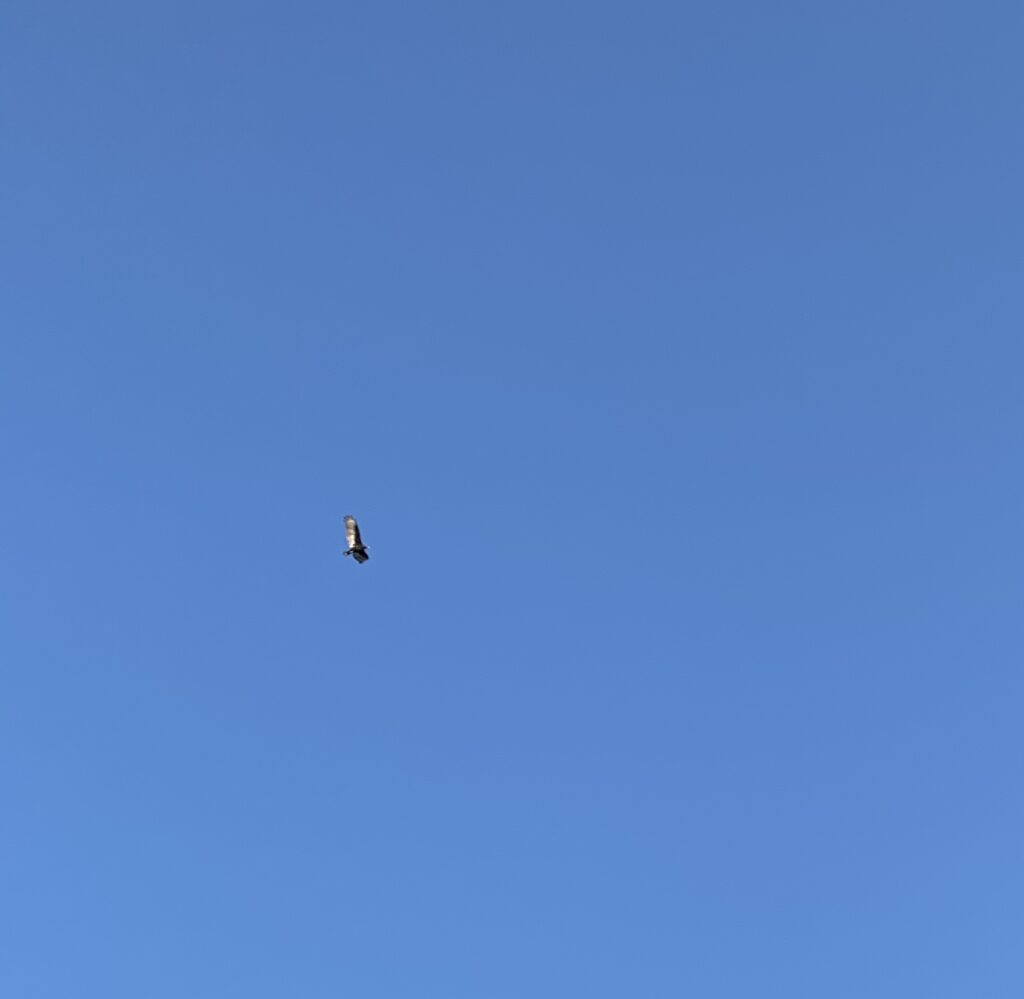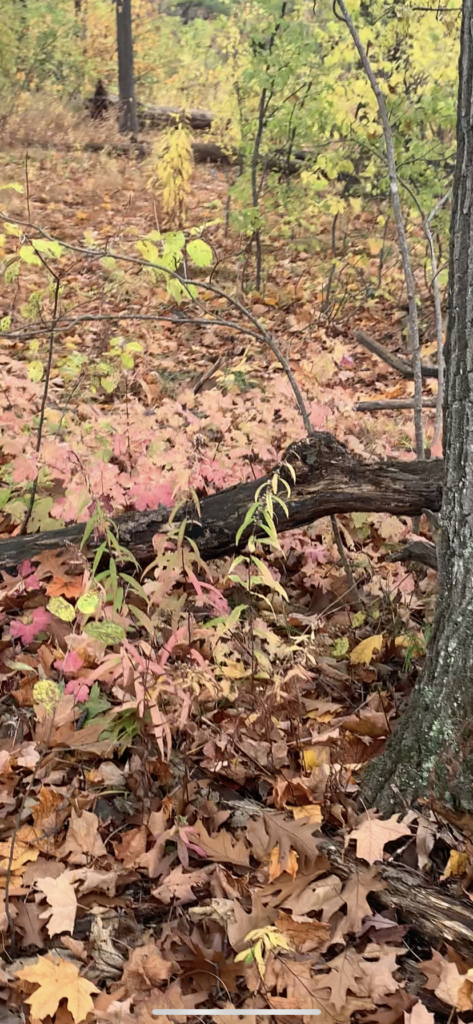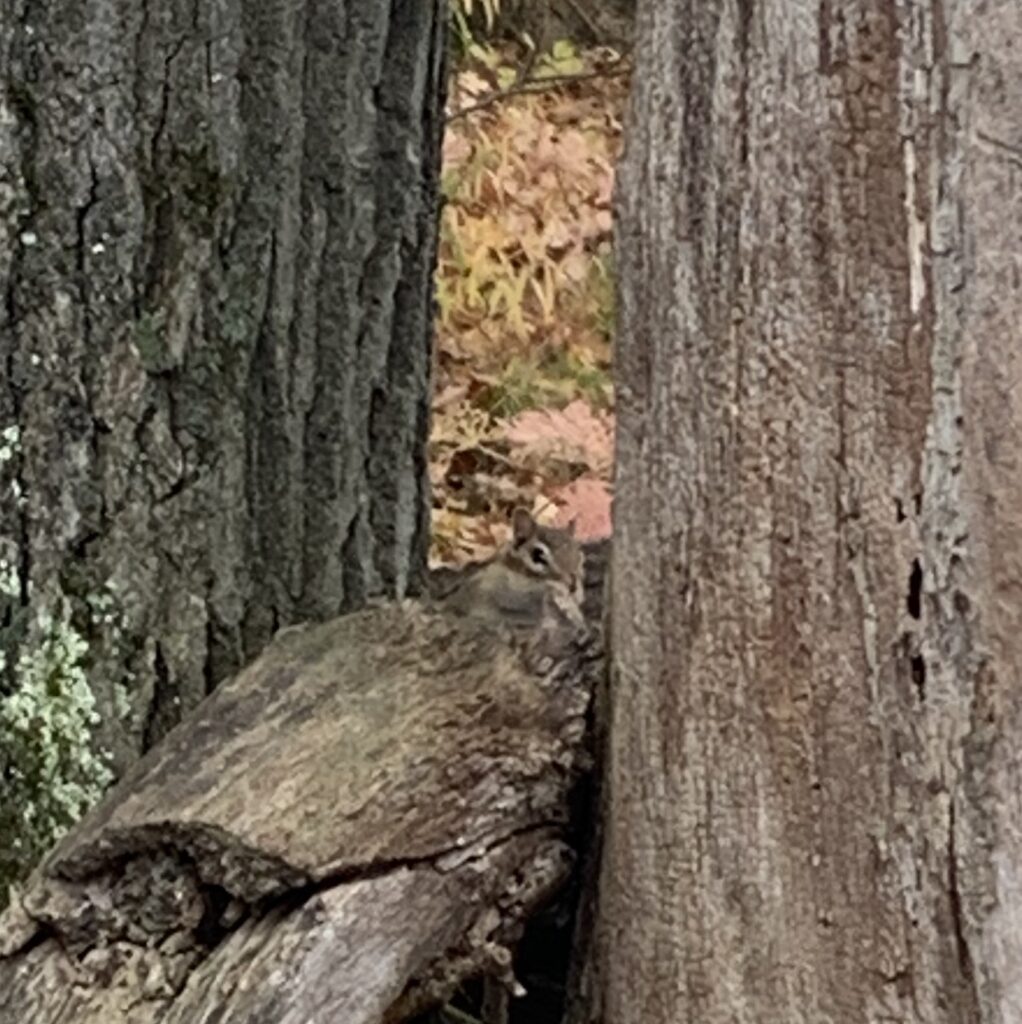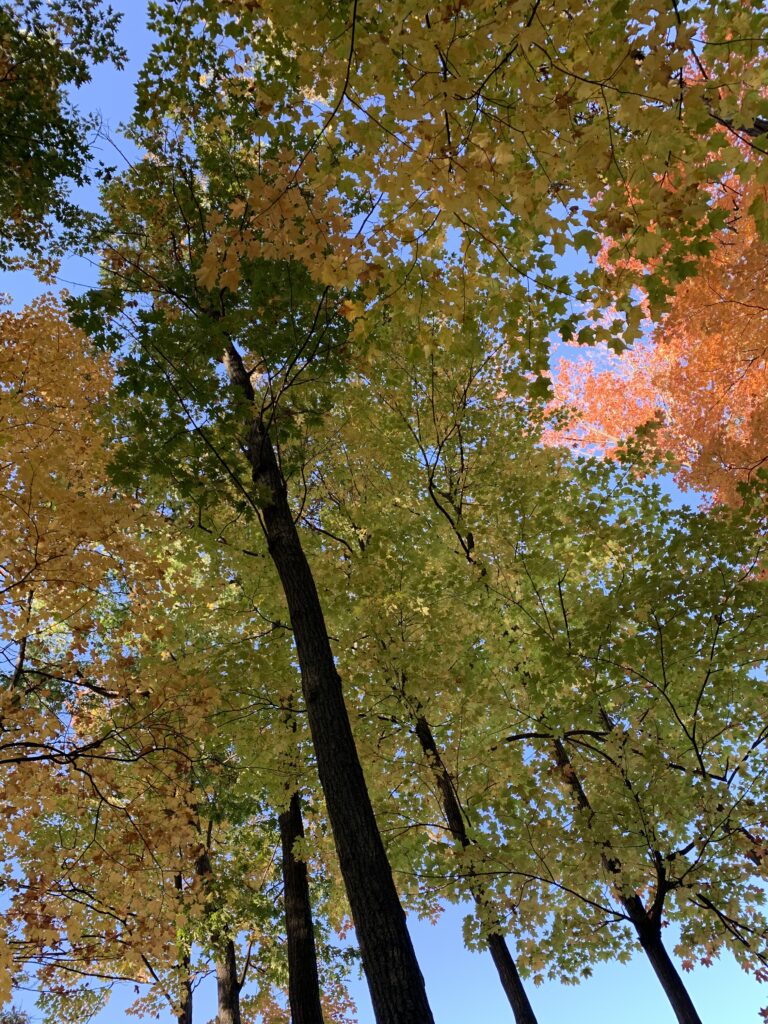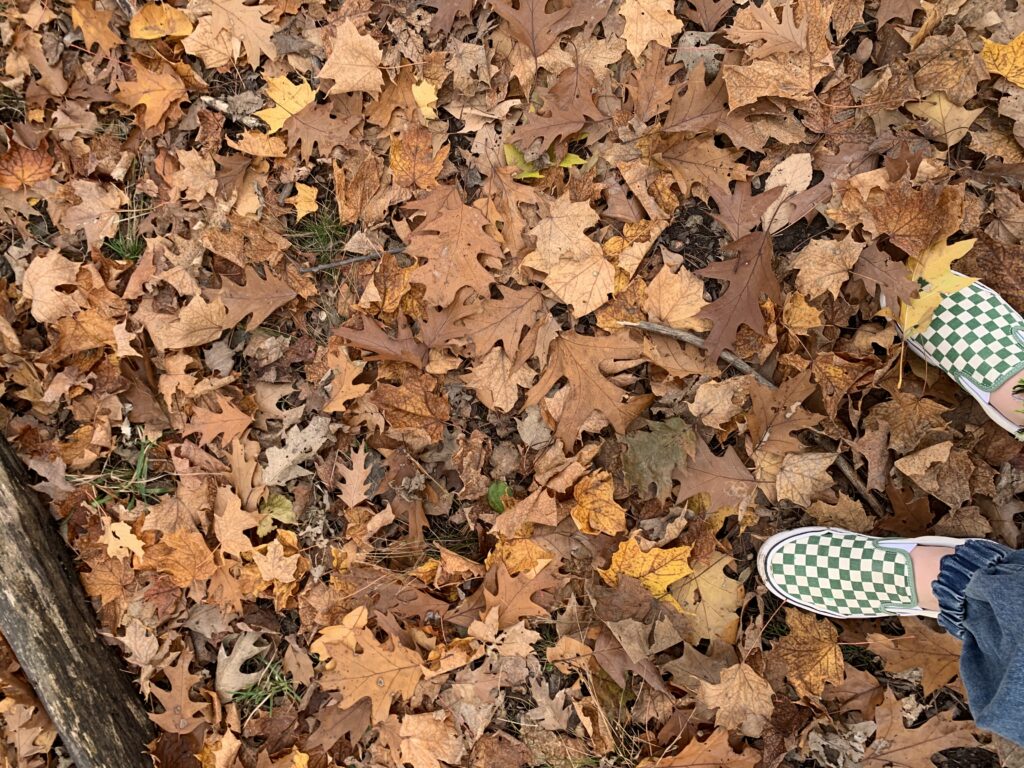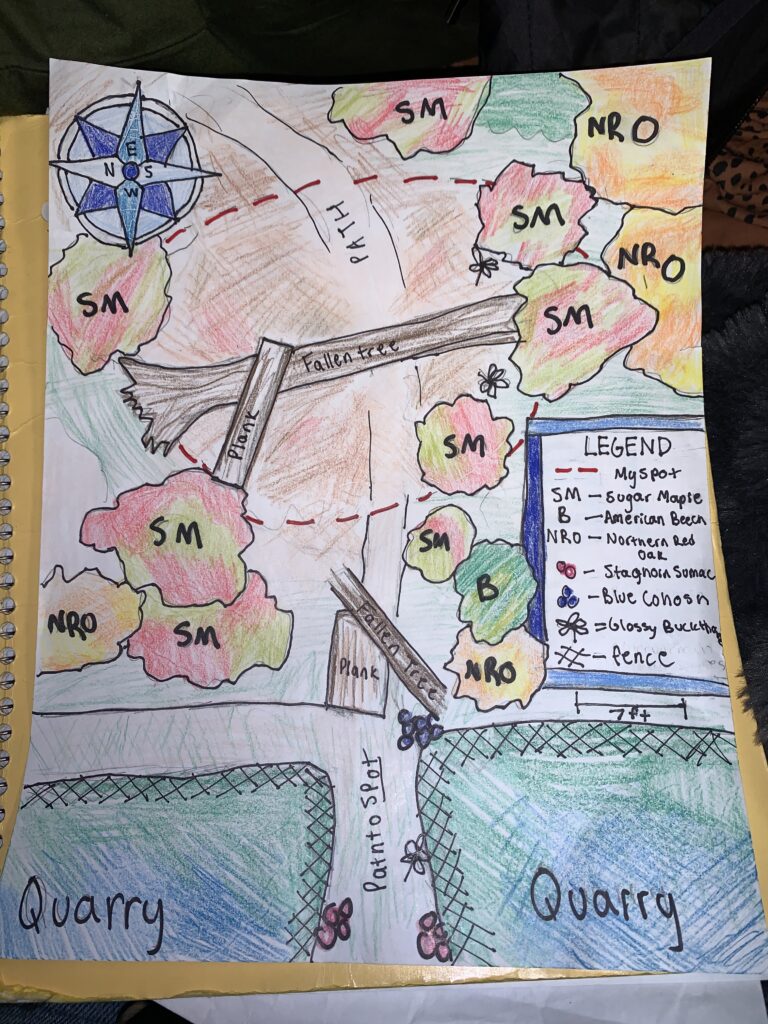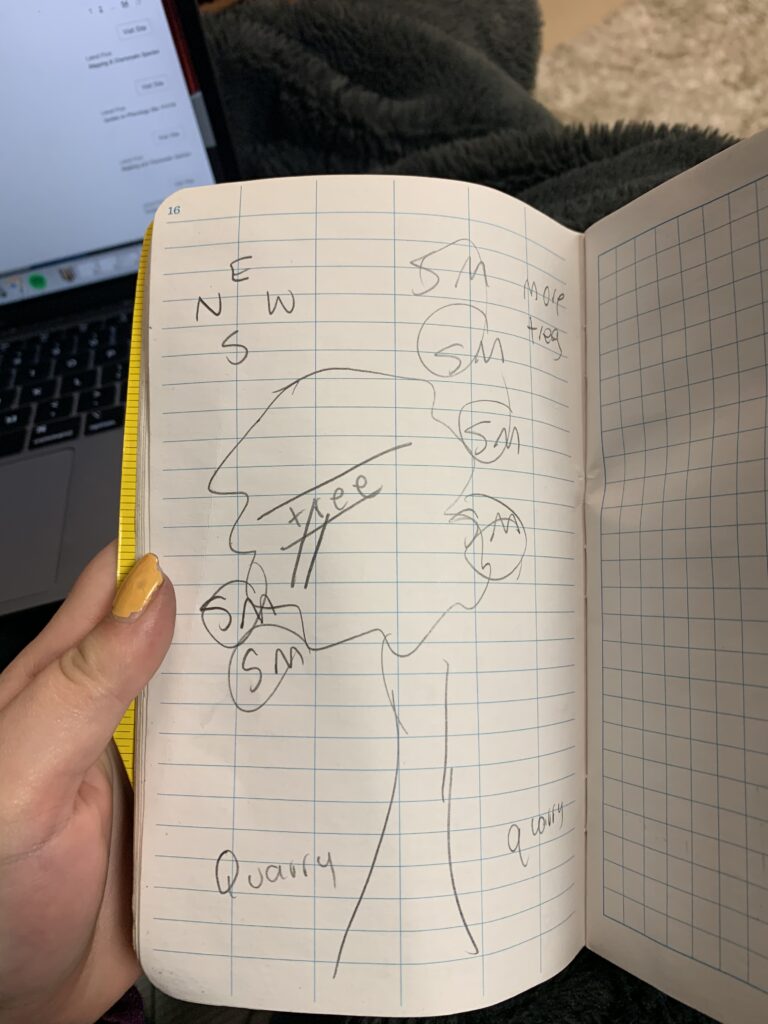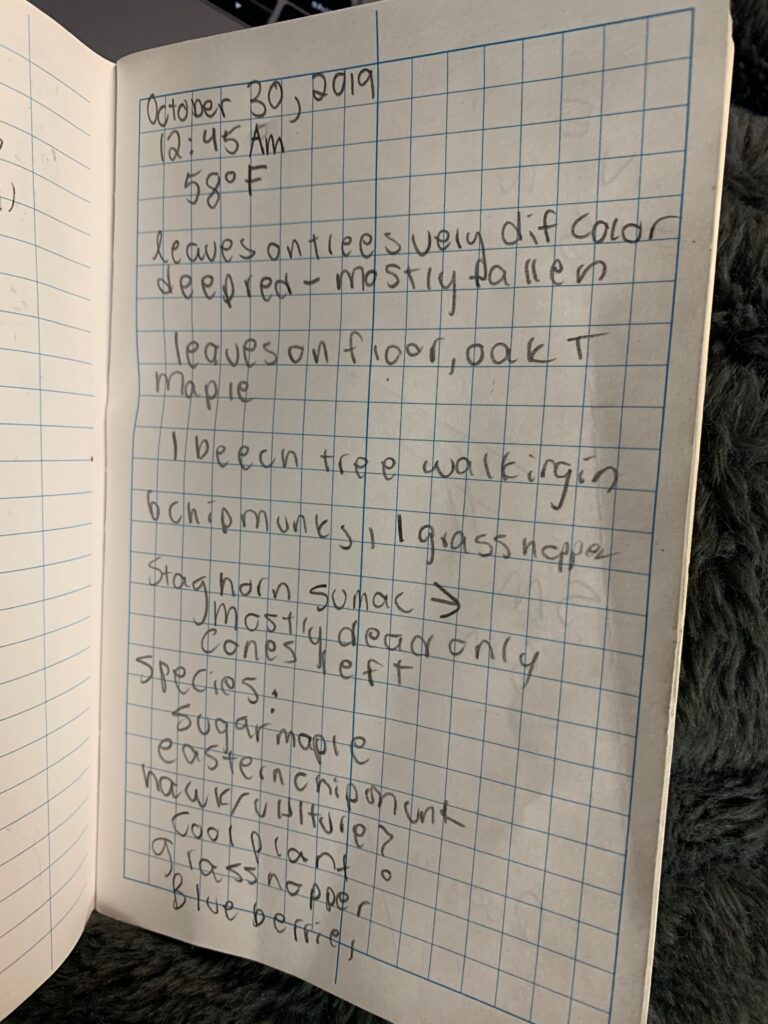Hello again! Welcome back to my blog! It is currently snowing out as I write this! YAY for Vermont winters! It’s hard to even recognize my place as its covered in the white powder! Walking to my spot I noticed the Quarry completely frozen over. My path was blanketed in white and the bright fall colors were nowhere to be seen. It feels slightly more empty now that the trees are barren and the forest is covered in white. I have started to create a strong attachment to my place as I walk to visit it weekly with my friend Grace. And as I start to connect and create and attachment to this place I have decided to think about those before me, humans and nonhumans who have also made connections to these beautiful trees and plants.
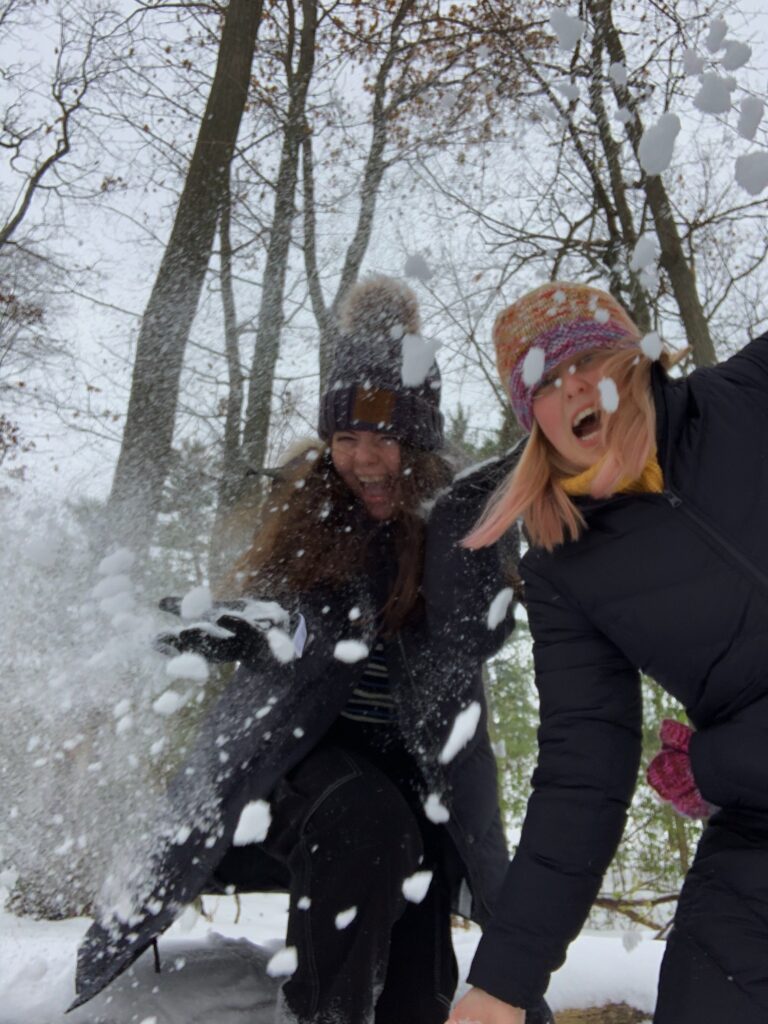
Changes in Phenology…
There are many changes going on currently in the Redstone woods. Just a few weeks ago I saw dozens of chipmunks scurrying around collecting nuts. Now the woods were much more silent. I saw one grey squirrel and one rabbit as I walked to my place. The forest floor is peacefully quiet, but it is different than before. It is completely blanketed in snow, the aster flowers and small plants trying to establish themselves in the soils weeks before are now covered with the cold veil of death. While I still heard the chirping of birds, it felt different as I looked up and could actually see the sky. There are no leaves left on my trees now, meaning there is much more light entering through the canopy. I was the first to visit spot since the snow, there were no other footprints or human activity. I feel connected to my place differently as it gets colder than I did while it was fall. I personally felt a stronger sense of place with the colorful leaves, as I have a strong personal connection to fall. Now as it is colder and I need to bundle up to walk over, I feel slightly more dislike towards the place. This in no means however suggests I no longer feel a strong sense of place in my spot, as I love to document its phenological changes and feel myself change with it.
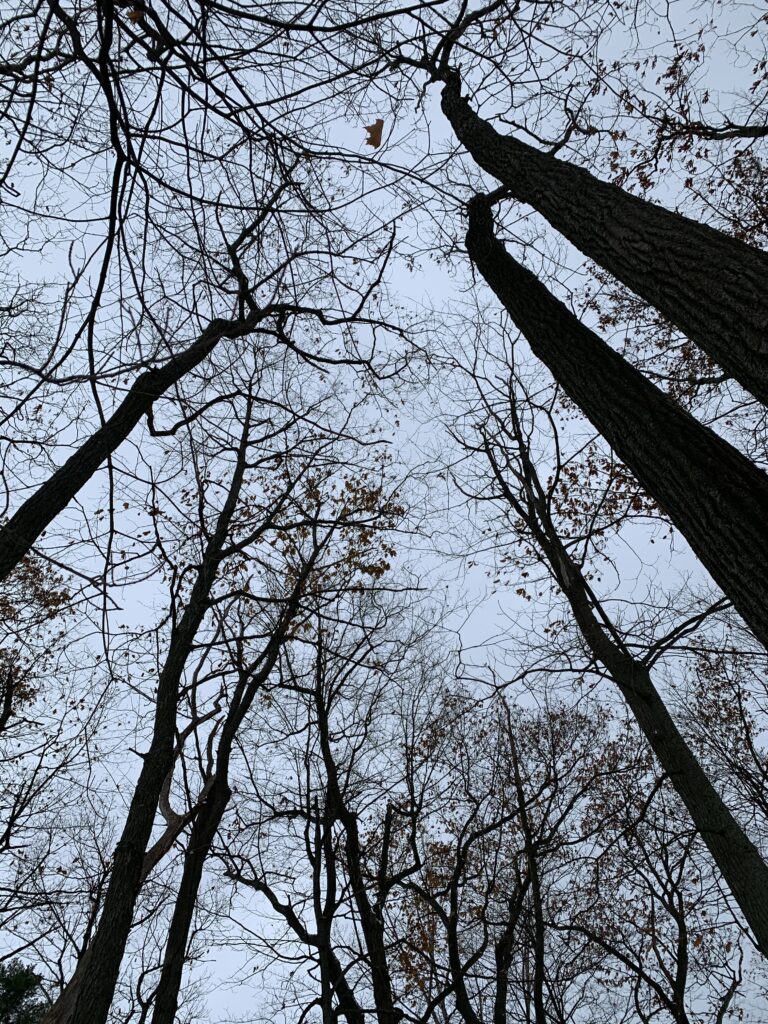
Nov 12 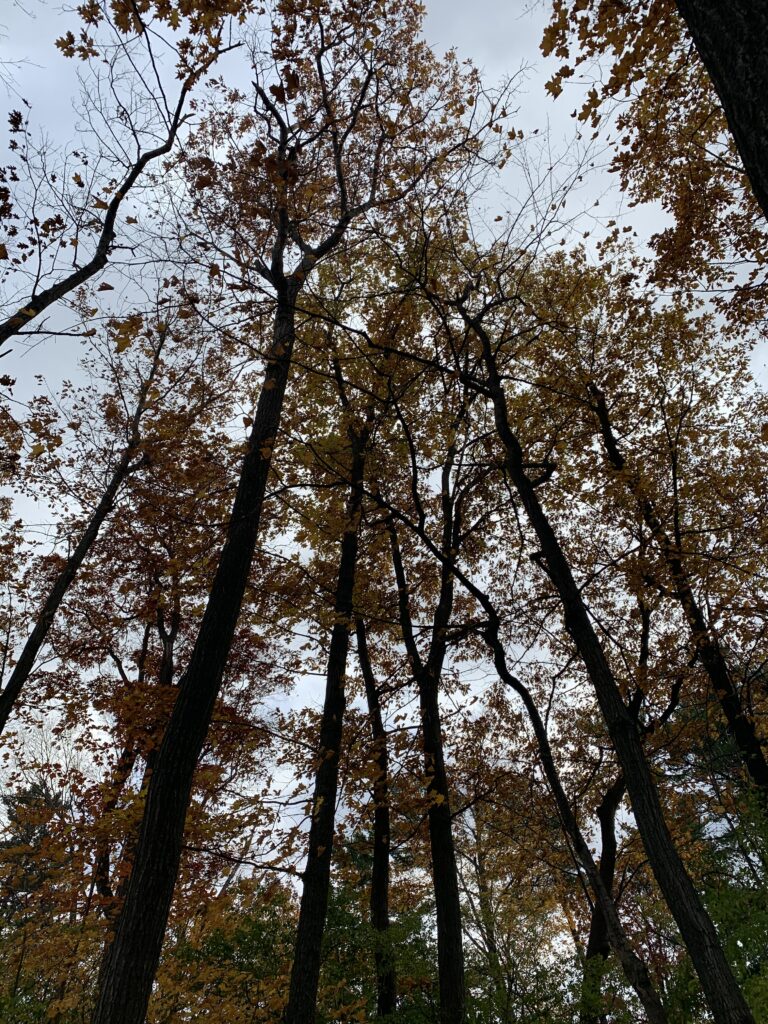
Oct 31 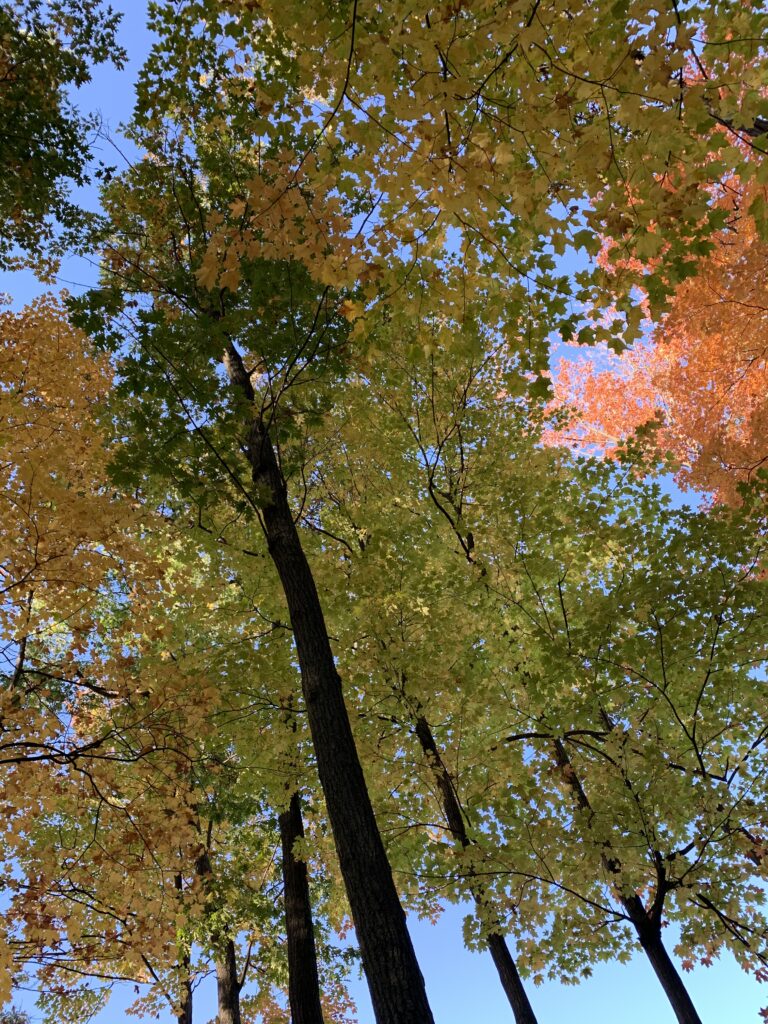
Oct
From a larger point of View…
Looking at my space as a component of larger area I can see the benefits it has for both UVM and Vermont. At UVM even though it is just a small natural area, It provides the students with access to a green space which is both a physical and mental health benefit. It helps to diversify and make campus more visually appealing, this natural area is the backdrop of a parking lot, without it the campus would seem like dreary concrete. Besides health and visual benefits this area also helps to preserve many of Vermonts valuable natural species. While this natural area is small, it is still important in biodiversity conservation and animal habitats. I have seen countless small mammals scurrying through it, the tall oak trees provide food and shelter for these animals. I also see lots of native species growing within my spot, which helps to strengthen Vermonts biodiverse ecosystem. While this spot works to bring nature and animal habitats onto UVMs campus it also helps on a larger scale. Looking at this place in terms of its value to Vermont, it provides yet more natural land that sequester carbon, mitigate climate change, and create a diversity of native genes. You can almost never go wrong with natural areas!
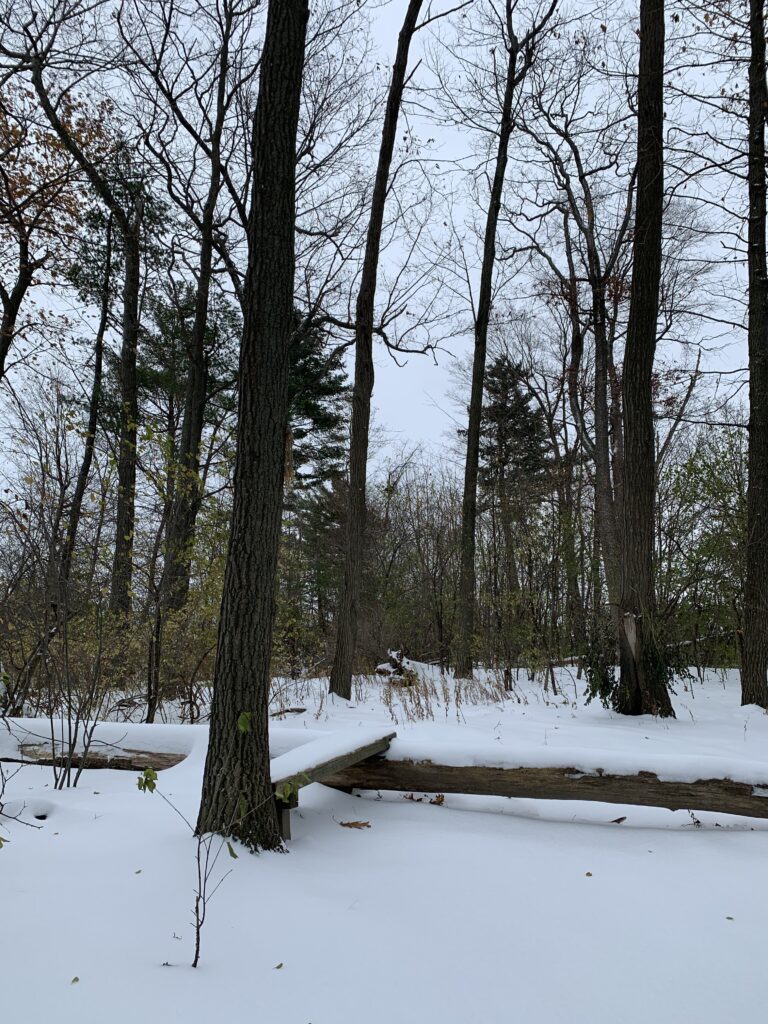
brrrrrrrr 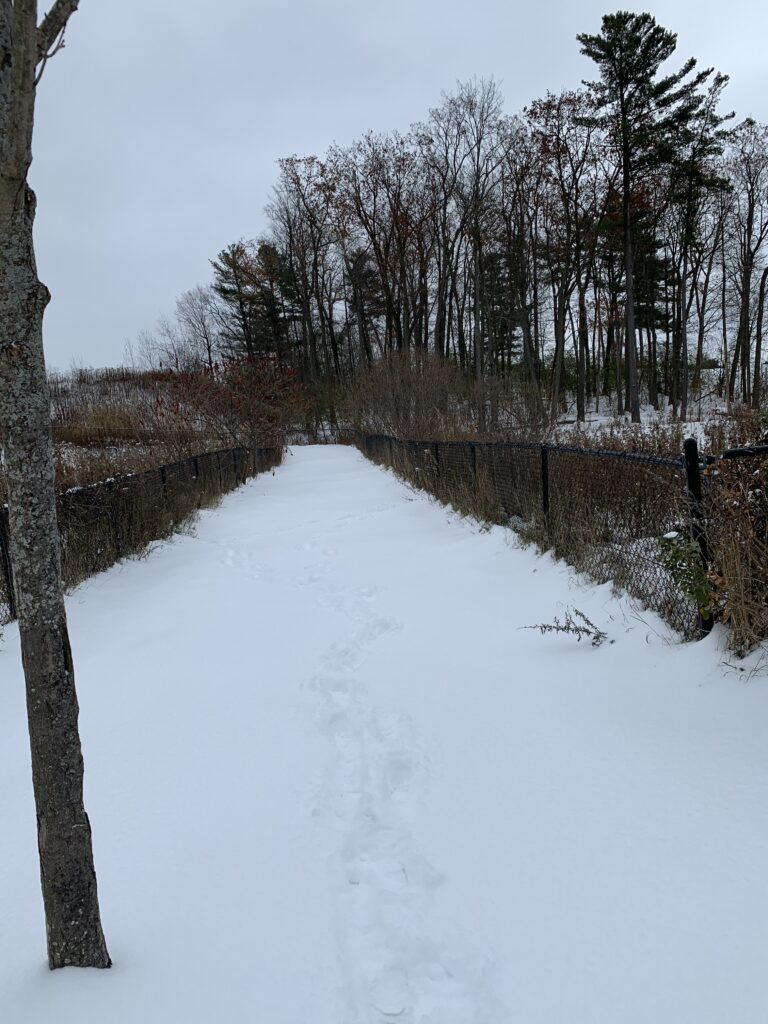
the walk to my spot 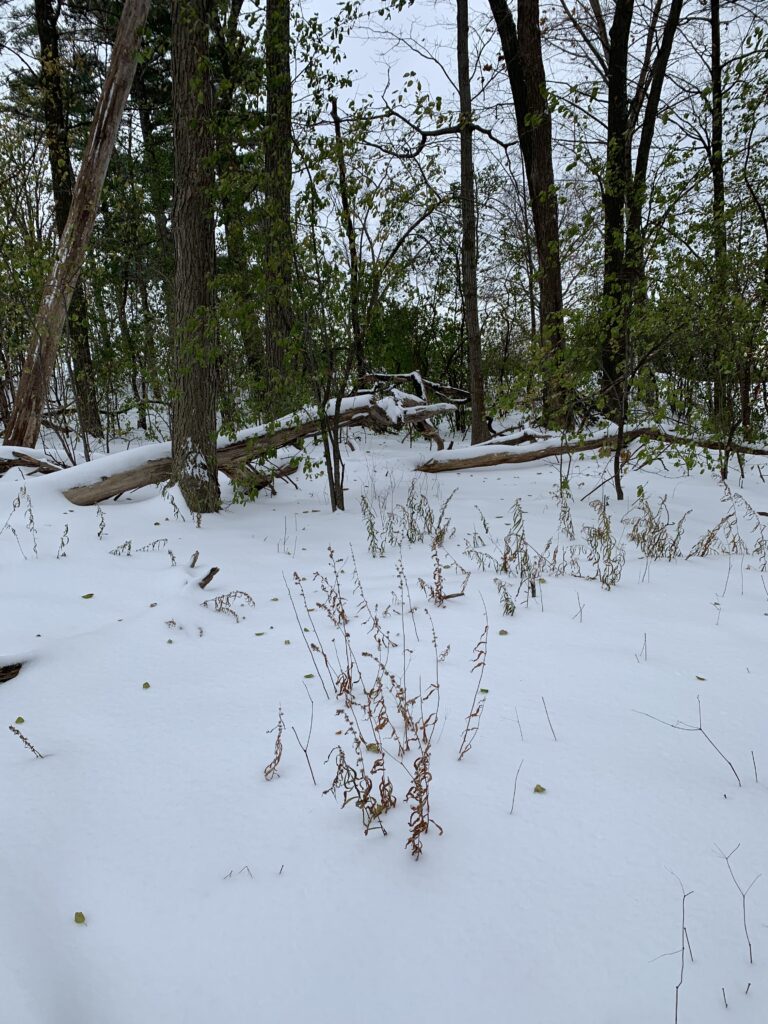
Historical Value…
This natural area separates the UVM campus and the neighboring golf course. It was probably manually planted with the very intention of doing that. The forest, while it serves a purpose also provides a beautiful place for students on campus. I know several students who love this small area of woods because it provides privacy to go sit in nature with your thoughts. I imagine in the 19th century my place was probably not around at all and was mostly farm land. While someone may have had a connection to that place it is very different than my sense of place is today, seeing I cherish it for its tall trees and natural area. Historically numerous other students have probably found their own reasons to be attached to these woods.
In conclusion…
Winter means lots of new things for my spot! The animals are changing- or should I saw hibernating. The trees are bare and the forest floor is more bare. It is colder out and everything is covered in snow. While this is a slow season for forest productivity I still see much going on. Walking back I noticed the roads covered in the ironically cheery rainbows of oil. As salt is placed on the road and pollutants like this oil start to run off into the woods and water bodies, I wonder the damage it will cause. Vermont winters are brutal and we are just getting started.
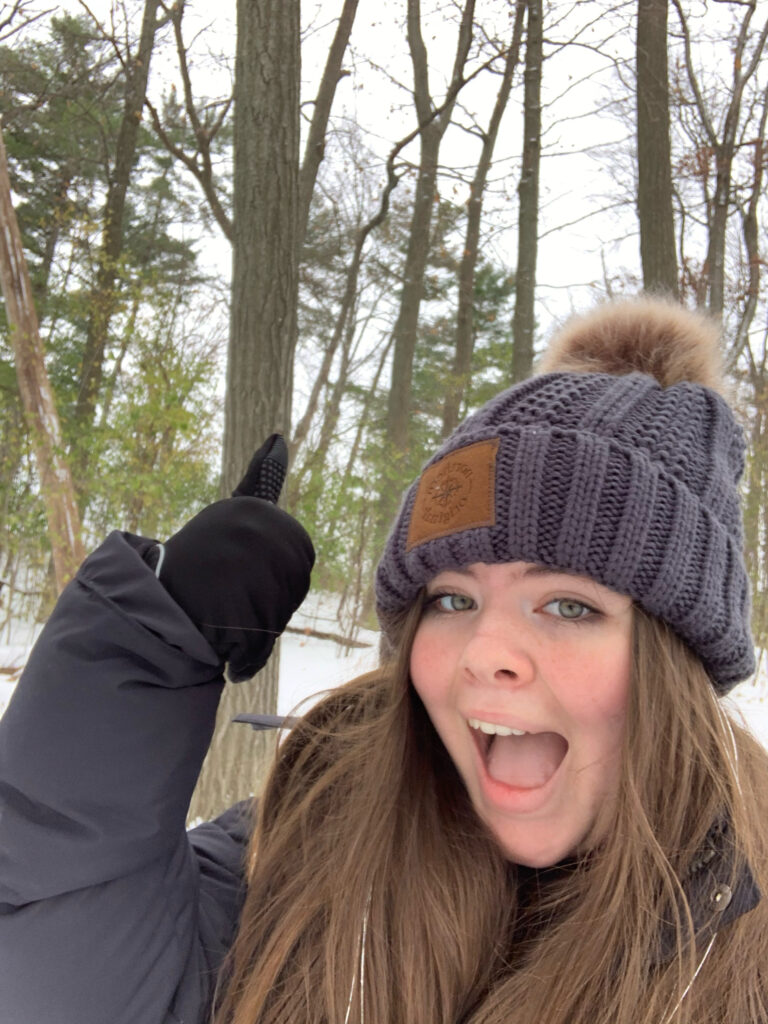
me! 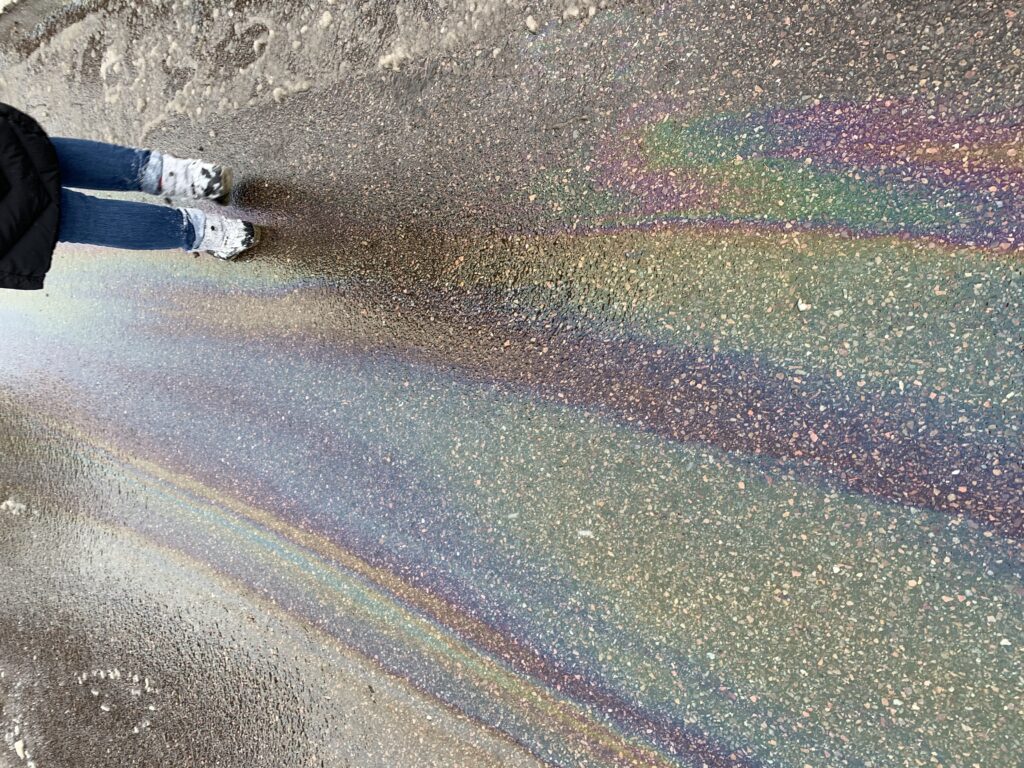
some nasT oil
